

Photo: Building apprentices - and workers housing,1972 © Geschichteclub Stahl
Zum Abriss freigegeben - Lunzerstr., Kunstuni Linz
The Lunzerstraße is situated in the south of Linz at the site of the vest alpine in-between the production buildings on the one side and the directly adjoining natural environment of the lower Traunlauf on the other side. The Lunzerstraße is a place of modification and transformation. Here in the end of the Second World War forced labourers of the "Hermann-Göring Werke" were place in the external camp of the KZ Mauthausen. 1972 the camp was demolished and apprentices - and workers housing were built on the very spot. These housing were transformed into a facilities for asylum applicants and refugees which had to be closed after ten years. Today most of these buildings are empty and are supposed to be demolished again till 2014. From this situation two site specific tasks, that the student worked on, emerged: Developing scenarios for the time after demolition or developing alternative scenarios to demolition.
The students dwelled on the buildings itself, their substance and perspective, their location between industry and nature and the challenges of urban planing. At first scenarios for a possible future of the surrounding area were formulated. The spectrum of assumptions what might happen is between entire oblivion, a tectonic plate shift south of the Traun or a development toward a Business incubator.
During the following intensive week in the middle of november the students occupied, inhabited and worked at the top levels of one of the buildings. A series of on-site interventions were developed. Here the students had the chance to test for one week the potentials and problems of the site, before they started their concrete design projects.
Students: Claudia Bönisch, Nicolas Brendle, Maria Aglia Dau, Costanza Coletti, Anna Firak, Felix Ganzer, Julius Jell, Hannah Kordes, Chloe Montagnat, Iris Nöbauer, Andrej Pohajda
Tutors: Matthias Böttger, Franz Koppelstätter, Katharina Weinberger; Sustainable Architecture + Spatial Tactics
Project documentation (in German)
Kunstuni Linz

Photo: Lunzersstrasse © Franz Koppelstaetter
Design Studio Projects of Students
Gambling for Space
Project of Maria Dau
The Scenario "Gambling for Space" underlies the evacuation of Voestalpine, as well as the attempt on nature’s recapture of the area. “This Eldorado of Nature” has a profound appeal to those population groups who are looking for an environment that is free of state regulation. They are a freedom-loving clientele which likes to shape their life and environment self-responsibly and to be independent of the welfare-principle of the social state. Instead they live from pro – active measures, the urge to settle and the solidarity in the community. The scenario on the colonizing of Lunz records stages of development as well as spatial and social conflicts concerning the anarchic appropriation of an imagined possibility space. The scenario “Gambling for Space” is about an attempt to establish an equal area planning in the wild Lunz without restricting the settlers in their aspirations for adventure and self-fulfillment. The physical implementation of this ideal of society starts with the settlement of the still intact building structures of VÖEST.
Booklet Maria Dau - Gambling for Space (in German)
L'NZ Wohnen im Rand (Eng. "L’NZ Living on the edge ")
Project of Julius Jell
Demolition, additive measurements and conversion generate new space in the towers and hereby allow flexible configuration concerning room planning and use. This way cellar compartments, bicycle stands, a playground, a summer kitchen, a garden house and a bicycle repair shop as well as other fields of experimentation are created.
Different interventions in the building structure generate a new living quality. All non-bearing walls are removed and the existing room is extended through a space-defining layer along the entire length of the building. Each structuring space module covers two floors and creates bright light filled paces as well as an entrance to the floor of the neighbor. This room layout allows different work and living combinations.
Booklet Julius Jell - L'NZ Wohnen im Rand (in German)
Lunz ist uns (Eng. "Lunz is ours")
Project of Nicolas Brendlé
In the Scenario “Lunz ist uns” VOEST needs to gradually demolish the site Linz and sell its surroundings. The plot is very cheap and offers the people a possibility to build cost-effective with the help of their creativity. The concept of the project underlies the low-tech approach. Thus, the interventions are carried out using simple technical means. The inhabitants build their own houses that suit their individual needs and they use their own existing expertise.
One family installs their windows themself, another family builds a windmill and the children of the house receive their own basketball court. The dream is not to build a house in the tree, but to bring the tree into the house. Apartments are huge. In the winter the space is reduced to heat islands. In case the weather allows it, people get lost in the building and enjoy the luxury and the magic of the empty space.
Booklet Nicolas Brendlé - Lunz ist uns (in German)
Lunz, vom Wasser aus (Eng. "Lunz seen from the water")
Project of Felix Ganzer
Booklet Felix Ganzer - Lunz, vom Wasser aus (in German)
Lunzapark
Project of Costanza Coletti
Since voestalpine decided, there will be no future for the Lunzerstraße buildings, Öunzapark wants to reconsider and show that all the declaired garbage can be reused and that another future fort he site is as possible as desirable. The implementation oft he Lunzapark shall happen in the same way as the one week of interventions and installations took place in the beginning oft he project: a border oft he park would be defined and from there on the park is open to anyone who is interested in doing something as buiding a jacusis,a sauna, sports fields and lots of other attractions. In the end Lunzapark will become an example of Urban Pioneerism, provocation to the utilitaristic use of territory and an amazing recycle amusement park. „The Junk of Lunz will become the attraction of Lunzapark, and Lunzapark will become the attraction of Linz.“
Booklet Costanza Coletti - Lunzapark
M’Pool
Project of Anna Firak
Booklet Anna Firak - M'Pool (in German)
Stairs of Lunz
Project of Andrej Pohadja
The project of „Stairs of Lunz“ is based on the idea of a growing industrie in the city of Linz and therefore ther will also be a increasing demand for new homes. The area of Lunzerstraße, where the four former dormitory-buildings oft he voestalpine are located, is half surrounded by industry, but on the other half there is unnaffected nature with the river Traun flowing through. The project clears and improves the site and leave only the blocks that are lowered from the north to the south and keep the rest as ruins untherneath a new structure: long terrased steel constructions are build on them strarting from their tops and lowering to the Traun. The volumen is devided into 34 luxury apartments with big terrases for the new middle and upper class oft he voestalpine.
Booklet Andrej Pohadja - Stairs of Lunz
Start up Lunz 42 [ ] 48
Project of Claudia Bönisch
Booklet Claudia Bönisch - Start up Lunz 42 [ ] 48 (in German)
On-Site-Interventionen of the students:
Alternative Route
Project of Julius Jell
How does one get to Lunzerstraße? Four times daily the shuttle bus runs via Lunzerstraße and of course, if available one can travel by car. Otherwise with respect to pedestrians and cyclists the street is not very attractive. It is much more exciting to bike with the items for daily use from the Solarcity along the Tranau and cross the river with a rowboat.
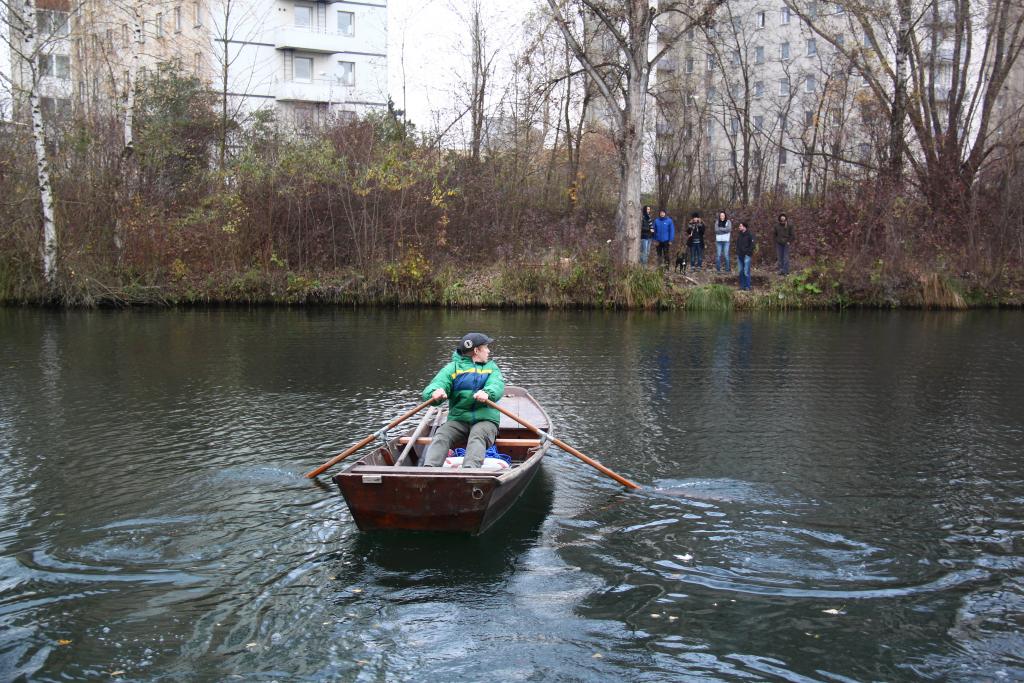
Photo © Iris Nöbauer
Beauty Salon
Project of Iris Nöbauer and Costanza Coletti
It is a matter of showing what can happen and be created in a place like Lunz - things, that at first one did not believe would have been possible here. Only by rearranging the interior, a new space of beauty has been created. WE ARE BEAUTIFUL!

Photo © Costanza Coletti
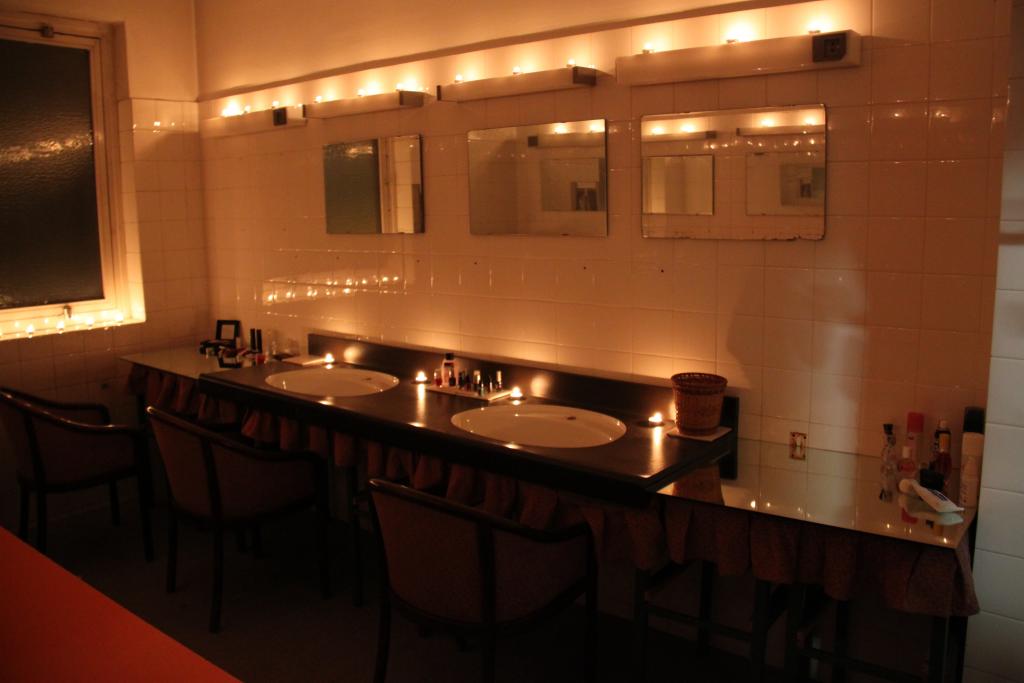
Photo © Iris Nöbauer
Innen-Aussen (Inside-outside)
Project of Andrey Pohajda and Nicolas Brendlé
The question of this week was: "How can we make this place inhabitable?" We want to connect the residential tower block with the river and as a result scoop more quality of life. Considering that, we used an elementary object - the bench. To connect the inside and the outside, we created an exchange. On the waterfront we built a bench out of materials from the interior and for the bench inside we used things, we found in the open.
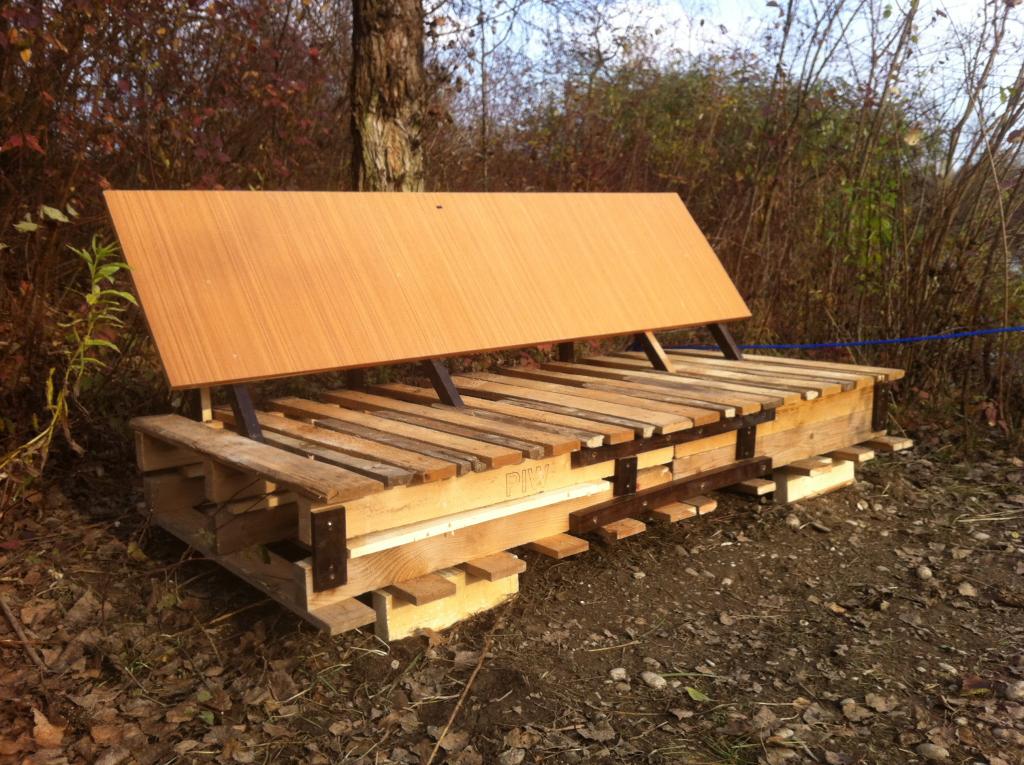
Photo © Iris Nöbauer

Photo © Iris Nöbauer
Recht auf Wärme (Lehmofen) (Right to heat (clay stove))
Project of Hannah Kordes
The further away people live from the city, the less infrastructure they can use (internet, supermarket, thermally stable housing) the more dependent they feel. Dependent from their own skills and knowledge, how to survive in the rural urban wilderness. LUNZ, remote from the city holds risks on the one hand but on the other hand it offers possibilities. The area needs a heart. Its own motor. Its own oven! Together in the course of the intensive week a clay stove was built. The whole material originates 100% from Lunz. The place becomes step-by-step self-sufficient and experiments with temporary and permanent sustainable types of future settlement.
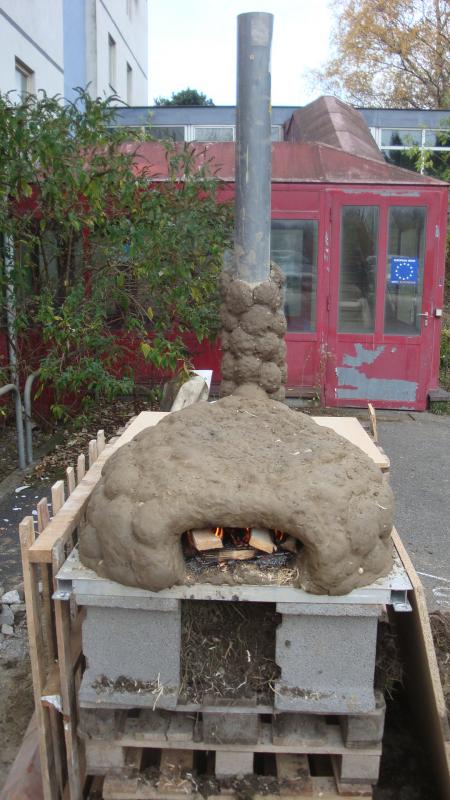
Photo © Hannah Kordes
Zeiträume (time periods)
Project of Maria Dau
Hypothetical, nothing will happen. The residential tower blocks of the Lunzerstraße remain, will be forgotten or continued to be ignored. On the 10th floor the window stays open and the nature does what it always does. It takes control, where culture shows no interest.
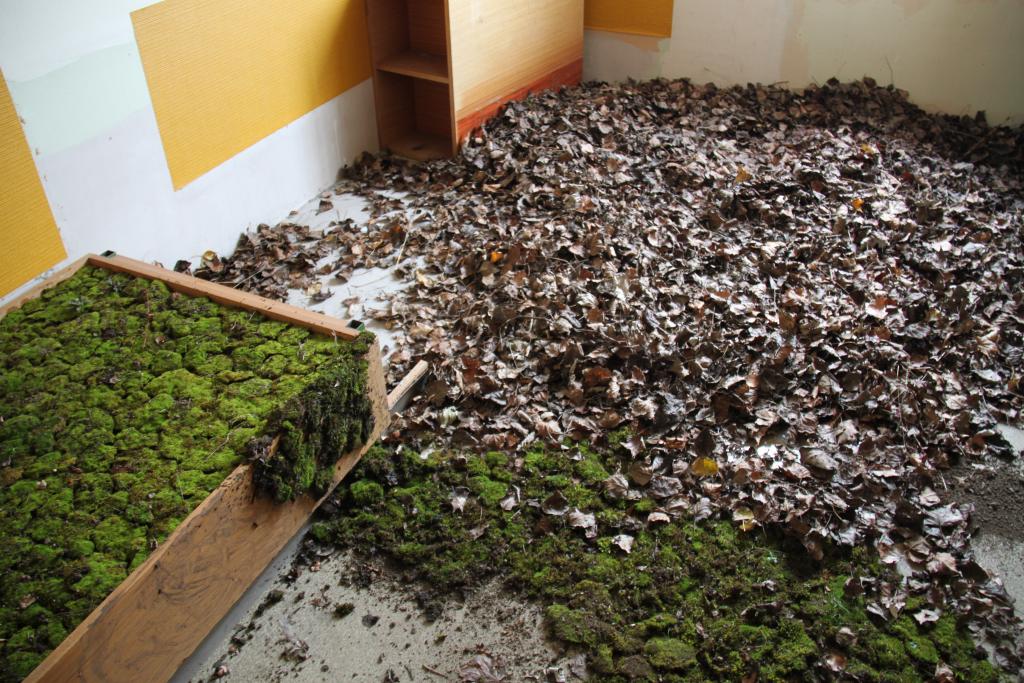
Foto © Iris Nöbauer
Zeiträume (time periods)
Project of Anna Firak
Far from what is happening, the Lunzerstrasse-blocks stand on the banks of the Traun . The Zeiträume are a journey through the stories of the place till today, the crossroad, where the future begins. One of these rooms reflects the external camp III of the KZ Mauthausen, which was situated here 1944/45.
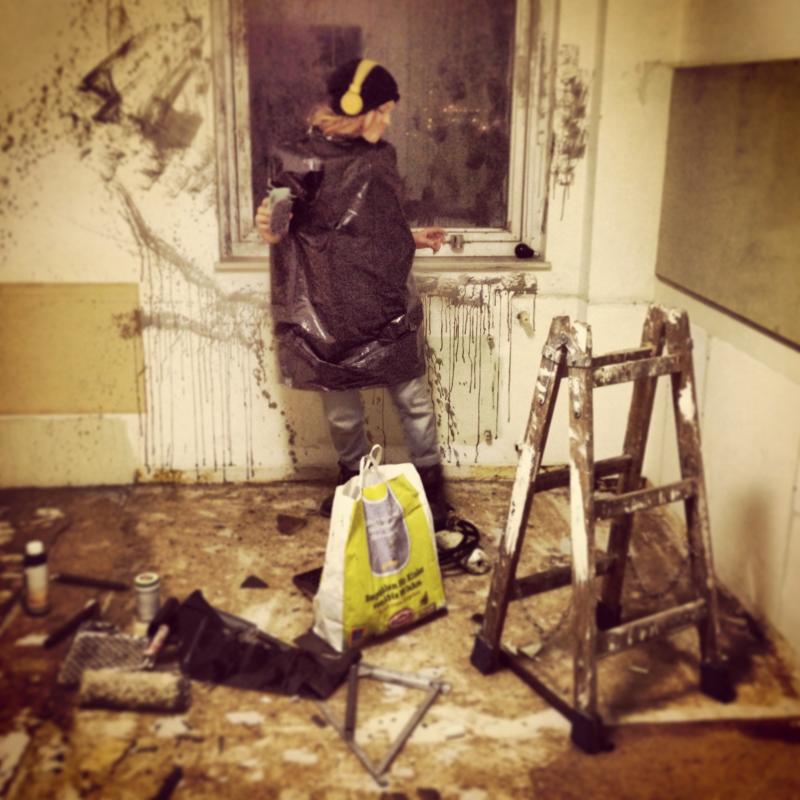
Photo © Costanza Coletti
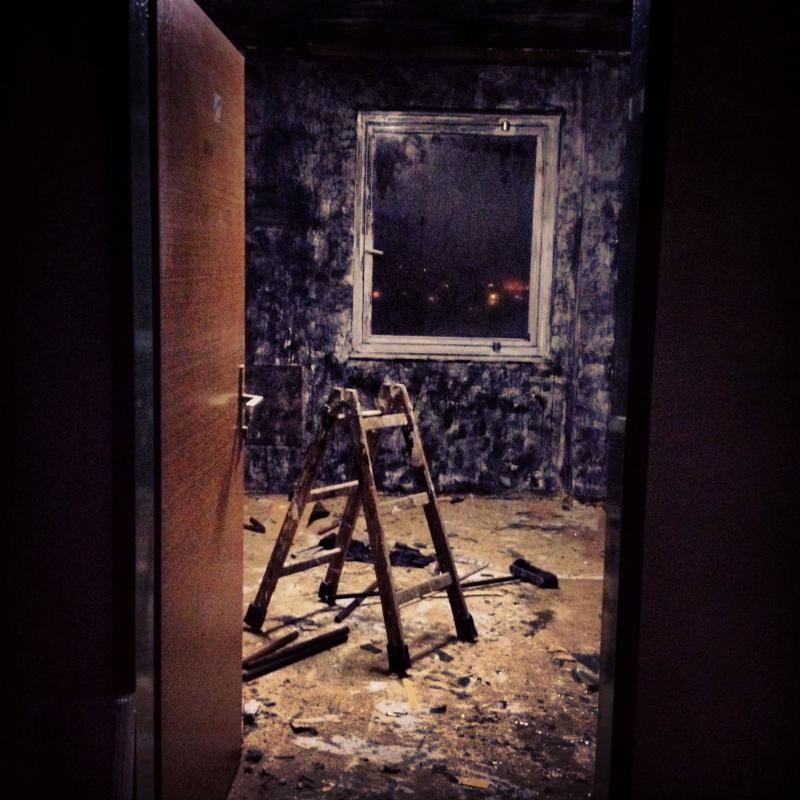
Photo © Anna Firak
Rubble's bubbles
Project of Chloé Montagnac
What happened in this building? What was the everyday life of its residents ? What is the past of Lunzerstrasse ? Through this intervention, I suggest to take a break. Take your time, sit down in the room and observe the forms on the walls. This forms increase the process of destruction. Now, let your imagination run free. The room is bathed in blue light. Rubble's bubbles float like suspended in the air. What do you feel? What's happening in this room? What could be the life in this building fifty years from now?
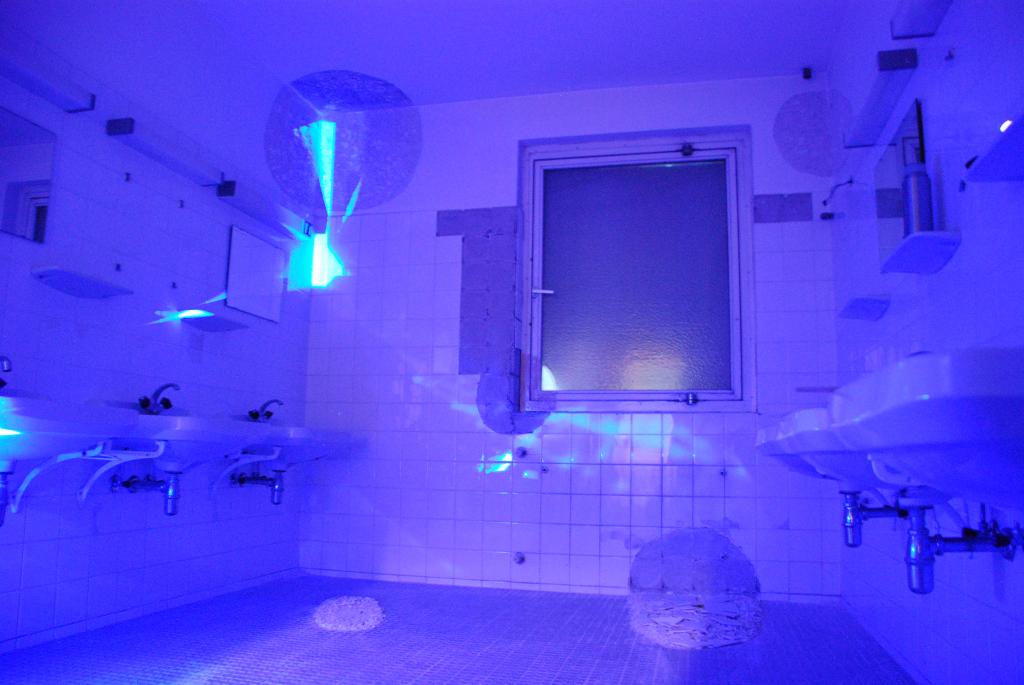
Photo © Chloé Montagnac